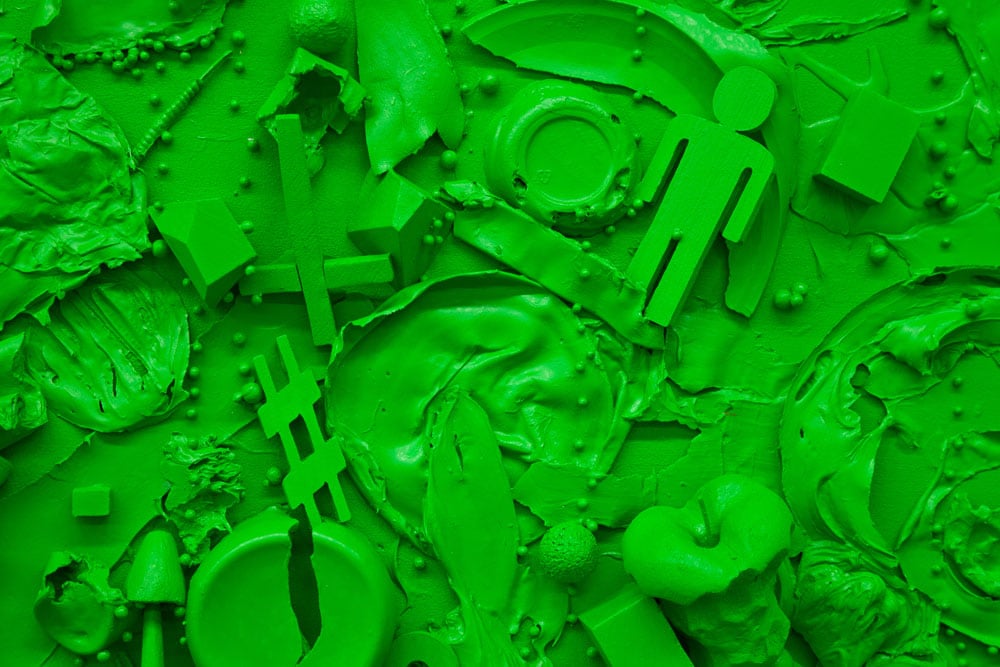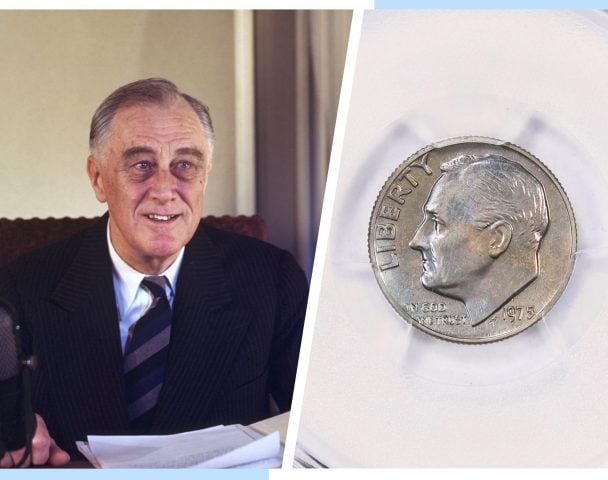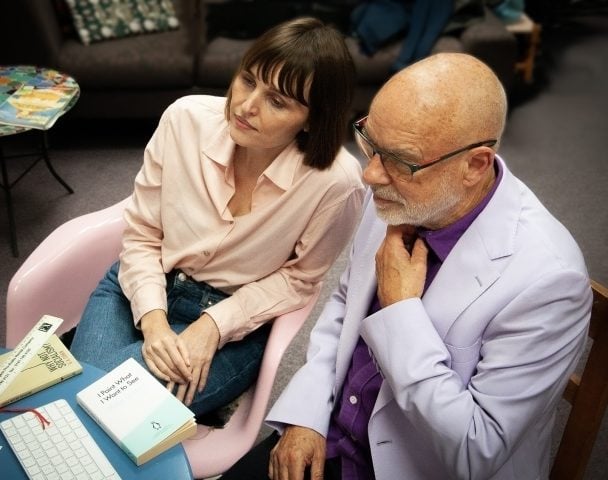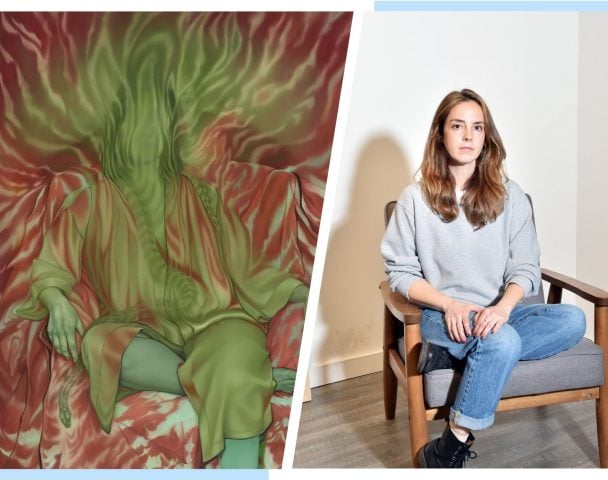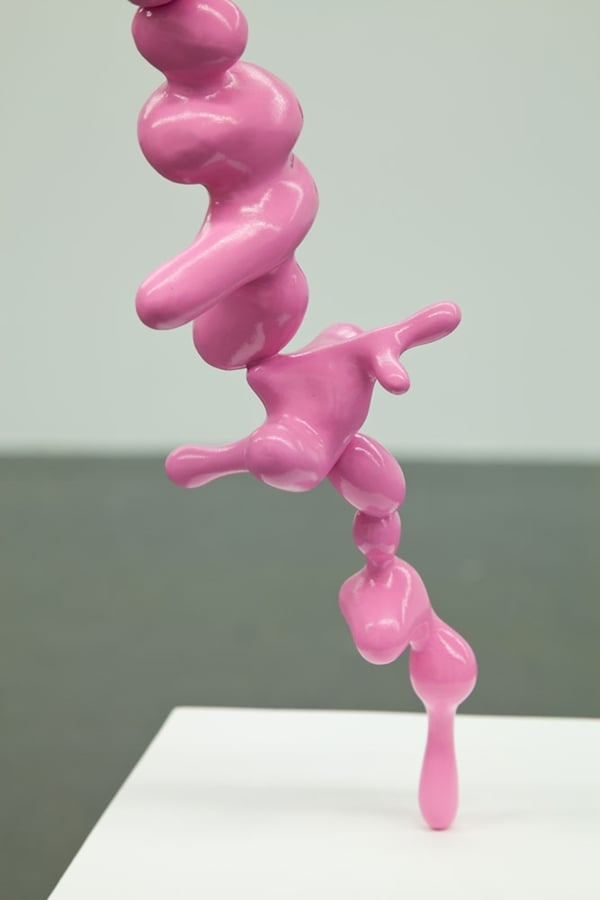
Tom Friedman, Pepto Bismol Pink (2014), detail.
Photo: © Tom Friedman; Courtesy of the artist and Luhring Augustine, New York.
A remarkable thing happened inside Tom Friedman’s Luhring Augustine Bushwick show a few weeks back: Art cleared up some crucial professional blind spots. A fellow critic (Mr. Blake “Strictly Critical” Gopnik) and I were fooled into being underwhelmed by what is arguably the best gallery exhibition in the city. The works on view—mostly wall-hanging pieces mimicking conventional paintings—played right into our lazy literal-mindedness. After nearly walking out of the gallery based on what we thought we knew, we stayed to practically close the place, fascinated by what we didn’t.
Looking repeatedly, or consistently forcing other people to, is Tom Friedman’s signature achievement. If that sounds like small potatoes, think again: Compelling the eyes to feast on what the brain casually discards can be a lot like prescribing corrective lenses. A sly champion of augmented perception, Friedman has consistently pointed up the small print that distinguishes what we look at from what we should actually be seeing. By concentrating on the seemingly insignificant, this artist has helped instill clarity of vision in many lucky viewers. At his current Brooklyn show—his first in New York in two years—the St. Louis–born, Northampton, Massachusetts–based sculptor once again takes his place as contemporary art’s leading eye specialist.
A famous non-household name—the sculptor is the anti–Jeff Koons in every possible salutary way—Friedman nonetheless regularly achieves spectacular results with all kinds of commonplace materials. His many media include pencil shavings, dollar bills, sugar cubes, toothpicks, cereal boxes, toothpaste, laundry detergent, pubic hair and human feces. His latest pieces use just Styrofoam and acrylic paint to set off the artist’s trademark perceptual fireworks. Weird trompe l’oeil freestanding objects and wall mounted “sculptures of paintings” that imitate various genres, including landscape, seascape, portraiture, still life, and abstraction, these works also deliver mightily on a strangely deadpan, resolutely handmade marriage of form and content.
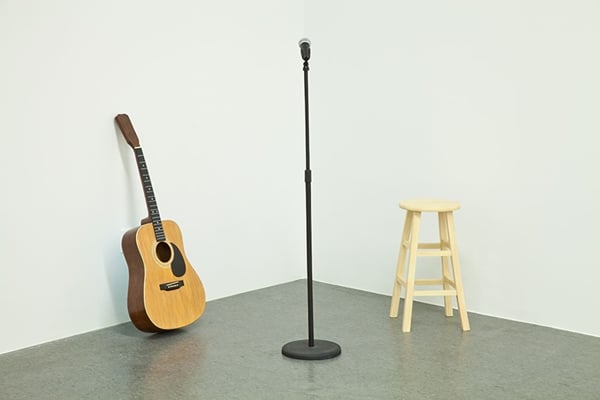
Tom Friedman, Moot (2014).
Photo: © Tom Friedman; Courtesy of the artist and Luhring Augustine, New York.
Friedman’s new show, prosaically titled “Paint and Styrofoam,” features four separate sculptures and eleven three-dimensional, monochrome “paintings,” all of which are made from—you guessed it—paint and Styrofoam. An exhibition that displays the artist’s obsession with recreating everyday stuff, it also takes care to render its counterfeit cultural objects mild-manneredly, basically by downplaying its incredible virtuosity. Some of the works the gallery refers to as “paintings,” for instance, are finished coyly—joists, nail heads and all—to appear as if they are simply framed. Others expose the folded canvas corners of stretchers with such fidelity as to appear realistic but eerie. Together, these works—along with others that are either presented directly on the floor, on a plinth, or hanging from the ceiling from clear filament—create a bizarre shadow version of art history. Even before you know what you’re looking at, Friedman’s installation can quietly conjure up a nightmare of surrogate creativity à la Allan McCollum, or a missing museum scene from the 1978 film Invasion of the Body Snatchers.
Unlike in previous shows where the artist’s focus on organic or commercial objects helped achieve his head-snapping double takes, Friedman frames culture as nature in Bushwick by invoking, alternately, obvious and sneaky references to key moments of 20th-century art. Among his painting quotations are a bright yellow self-portrait of the artist in a straw hat hung next to a faux-impastoed, pitch-black rendition of Van Gogh’s Starry Night; several pieces that painstakingly copy the organic crackelure of various kinds of postminimal canvases; and a pair of combine-like accretions of sculpted stuff in lime green and Dodger blue that also recall, thanks to some tiny gradated balls made to look like water bubbles, the great Pacific garbage patch. Note to the ecologically-minded viewer: The sculpted, stuck-on articles in question, which include plastic utensils, a chair leg, and a swastika, appear to float in their whittled polystyrene frames like brightly colored toxic waste in extra-large fish tanks.
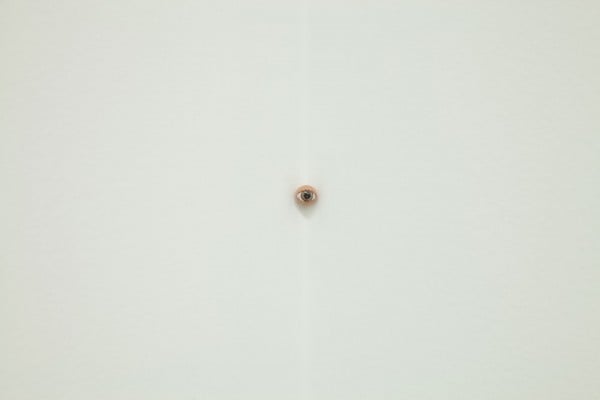
Tom Friedman, See (2014).
Photo: © Tom Friedman; Courtesy of the artist and Luhring Augustine, New York.
Richly detailed, insanely labor-intensive, and fully autonomous pieces of art, Friedman’s Styrofoam-carved, acrylic-hued pieces also resonate throughout the gallery with the force of a single enveloping installation. On first viewing, it’s hard not to get caught simply scanning the works’ incredible minutiae (the gesso-like finish of one sculpture, the fake canvas weave of another, many of the “paintings’” carved “brushstrokes”). Once you do so, their echoing parts can rapidly accumulate into enigmatic gaps of seeing, which may result in a genuine spell of sleight-of-brain. If that happens, Friedman’s modest-looking fakes will have successfully turned, however momentarily, from rigorous artifice into their opposites. After all, it’s not often that a top-notch artist tries to pass off a series of brilliantly executed, insanely exacting, mind-and-eye-bending sculptures as a show of run-of-the-mill canvases done in house paint.
The exhibition’s four other works, rather than function as simple outliers, also prove to be central to the modestly interconnected logic of Friedman’s carefully designed installation. Among these are Pepto Bismol Pink (2014), a pedestal mounted cartoon spill that gives away the show’s Styrofoam core in the form of a toothy bite; Purple Balloon (2014), a thin tube that appears ready for its star turn as a balloon dog; and Moot (2014), a perfectly detailed stringless and cordless trio of guitar, microphone and stool. A group of works that plays mute orchestra to this artist’s sculptural tour de force, it also sets up the silent coda that is See (2014), a lidded eyeball tucked away inconspicuously at the far top corner of the gallery. A key if elusive work in “Paint and Styrofoam,” this last sculpture neatly literalizes Friedman’s (and art’s) most enduring illusion. Trick the eye, indeed.
[Featured image: Tom Friedman, Toxic Green Luscious Green (2014), detail. Photo: © Tom Friedman; Courtesy of the artist and Luhring Augustine, New York.]
